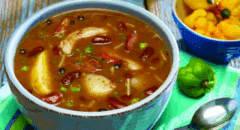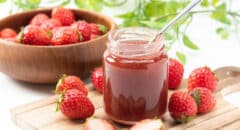
Hold the phone. Stop the presses. Whatever you do, make sure you put down that piece of chicken. The chicken you were eating and thought it came from a farm in U.S. straight to your table, maybe only half of the truth. It may have taken a little detour.
The U.S. Department of Agriculture in 2015 gave the green-light to four chicken processing plants in China, allowing chicken raised and slaughtered in the U.S. to be exported to China for processing, and then shipped back to the U.S. and sold on grocery shelves here. Since then, the imported processed poultry is not require a country-of-origin label nor will U.S. inspectors be on site at processing plants in China before it is shipped to the United States for human consumption.
MUST READ: Try This Recipe For "Get Your Man Chicken"
Food safety experts worry about the quality of chicken processed in a country notorious for avian influenza and food-borne illnesses. And they predict that China will eventually seek to broaden the export rules to allow chickens born and raised in China.
What's the reason for this shipping back and forth? It's like most things: M-O-N-E-Y.
The Bureau of Labor Statistics data estimates that American poultry processors are paid roughly $11 per hour on average. In China, reports have circulated that the country’s chicken workers can earn significantly less—$1 to 2 per hour—which casts doubt on Super’s economic feasibility assessment.
This process is already being used for U.S. seafood and other foods.
Made in China Cod Fish:
Cod is another type of fish that is fish farmed in China. This fish is not healthy and lives in its own waste. Currently, just over 50% of American Cod comes from China.
Made in China Apple Juice:
Believe it or not, approximately 50% of the apple juice sold in the United States comes from China. They are the LARGEST pesticide-producing country in the world and haven’t even begun addressing pesticide or chemical residue on foods. I recommend altogether avoiding apple juice for yourself and your children. Fruit juice is too rich in sugar and is better mixed with vegetable juice for blood sugar levels.
Made in China Mushrooms:
US inspectors have found tainted mushrooms from China. Some manufacturers go so far as to label these processed mushrooms organic to increase their profits. If you do a Google search, you’ll find that there are many “mystery mushrooms” in that area of the world, completely fake. 34% of processed mushrooms are from China. Do your best to know your source, and buy local and authentic organic!
According to the Seattle Times, domestically caught Pacific salmon and Dungeness crab are currently being processed in China and shipped back to the U.S., all because of significant cost savings.
Also, fish processors in the Northwest, including Seattle-based Trident Seafoods, are sending part of their catch of Alaskan salmon or Dungeness crab to China to be filleted or de-shelled before returning to U.S. tables.
“There are 36 pin bones in a salmon and the best way to remove them is by hand,” says Charles Bundrant, founder of Trident, which ships about 30 million pounds of its 1.2 billion-pound annual harvest to China for processing. “Something that would cost us $1 per pound labor here, they get it done for 20 cents in China.”
China has an infamous reputation as one of the world’s worst food safety offenders. Earlier this year, the U.S. Food and Drug Administration (FDA) released a report on a Chinese chicken jerky manufacturer that created dog treats tied to more than 500 dogs’ deaths.
Food Safety News aims to spread awareness of the pending USDA agreement and stop Chinese-processed chicken from ever reaching supermarkets or school lunchrooms.








